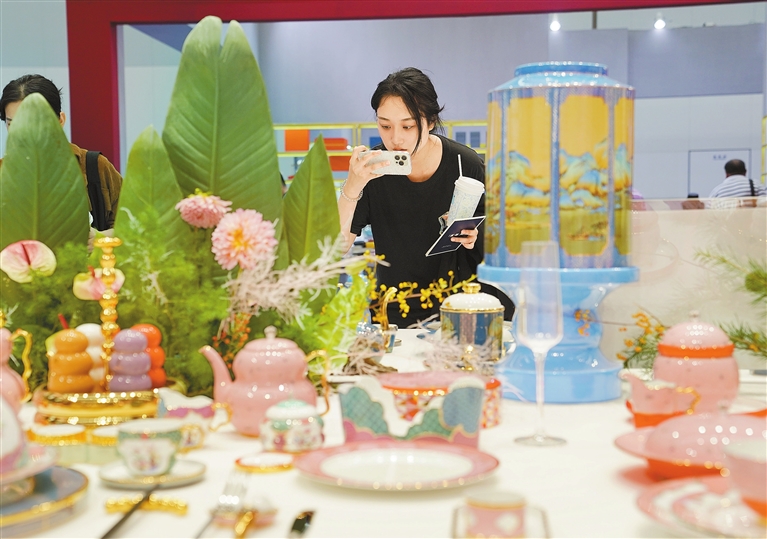
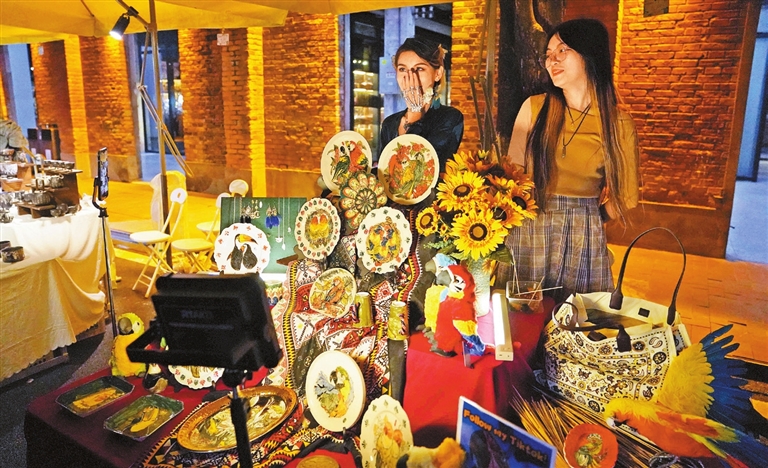
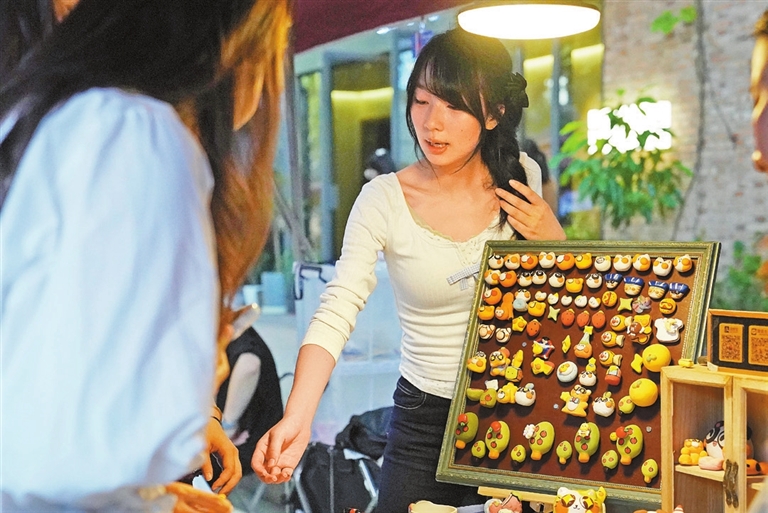
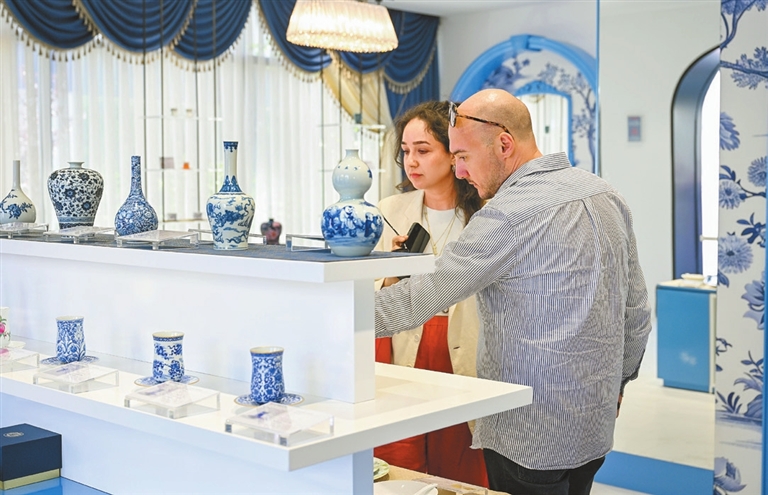
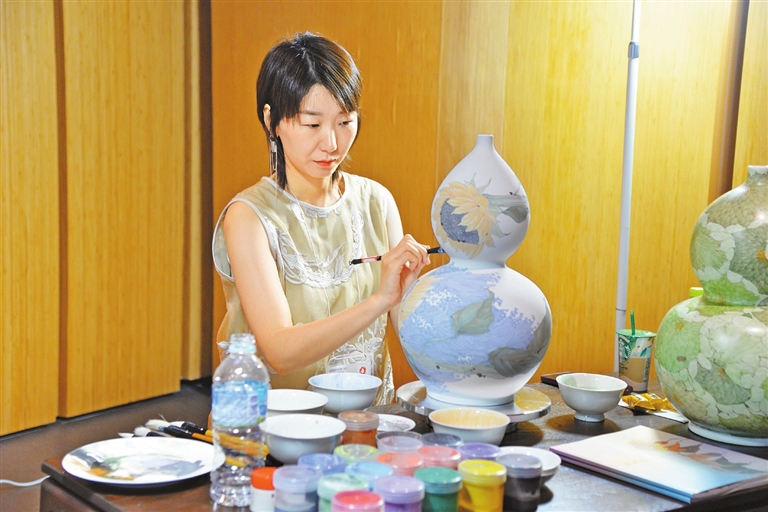
CAI WENJUAN’S ceramic speakers and coffee cups sold out within days at a trade fair in Budapest earlier this year. The secret to her success? She had painted the Hungarian national flower on each piece using glazing techniques passed down from the Yuan Dynasty (1271-1368). “If we don’t understand the culture and life of overseas consumers, it’s hard to go global — no matter how good our craftsmanship is,” said the 39-year-old artist. Cai comes from a family of porcelain makers in Jingdezhen, renowned as the “porcelain capital,” a city in eastern China’s Jiangxi Province with a ceramic history spanning more than 2,000 years. Cai represents a new generation of creators in Jingdezhen. Once the world’s premier exporter of china, the city is now endeavoring to regain a foothold in the global market. This time, they’re betting on design innovation, digital manufacturing, and pop-culture collaborations. The long history of a globalized commodity The history of Jingdezhen porcelain is an early example of a globalized commodity. For centuries, Jingdezhen provided custom-made dinnerware and decorative wares based on clients’ samples to Europe and beyond. A Ming dynasty (1368-1644) shipwreck discovered off the coast of southern China’s Hainan Province approximately two years ago contained 100,000 pieces of export porcelain, many of which originated from this region. In its heyday, local artisans hand-painted European family crests on custom orders placed by the Dutch East India Company. Yet in the 1990s, with the Chinese Government speeding up State-owned enterprise reforms, Jingdezhen’s 10 State-run ceramic factories, plagued by a lack of market consciousness and inflexible management structures, ceased operations abruptly. This threw the city’s ceramic industry into disarray. Competing ceramics hubs in China and established European brands like Meissen and Wedgwood had come to dominate global trade. To regain its standing in the global market, the city is combining its ancient skills with modern technology and marketing. Young studios and e-commerce firms are using 3D printing and online platforms to meet international demand for customized ceramics. At the Qianmo Cross-border E-commerce Industrial Park, batches of ceramic products are being shipped to overseas warehouses in the U.S., Australia, and New Zealand. “Jingdezhen porcelain used to prize artisanal skills over marketing, but now without mass production, it’s hard to stay competitive,” said Chen Jun, head of the company. Chen’s company has invested 320 million yuan (US$45 million) in developing overseas warehousing and agency operations to provide local products directly to international consumers. Hong Ziyu, 26, runs a company that developed recycled ceramics, made with crushed waste porcelain, to appeal to environment-conscious overseas buyers. The company also uses 3D printers to create intricate ceramic designs that would be almost impossible to make by hand. “3D printing is good at crafting irregularly shaped ceramics, thus helping expand the diversity of traditional ceramic forms,” he said. Artistic ceramic toys The most surprising twist is probably Jingdezhen’s entry into the world of artistic toys. A limited-edition ceramic Molly doll, produced in collaboration with the Chinese toy brand Pop Mart, sold out immediately, despite a price tag of nearly 14,000 yuan. Chentian Ceramics took two years and more than 20 successive sample modifications to perfect the doll. “Many tailored porcelain dolls we made for toy brands have a big head and very small feet. Being top-heavy and bottom-light, they were prone to collapse in high-temperature kilns, which prompted us to innovate on the traditional porcelain-making techniques,” said Xu Wan, general manager of the company. The blend of tradition and modern is working. China’s trendy toy market experienced explosive growth in the second quarter of the year, with transaction volume surging by over 300% year on year, according to a report released by idle goods marketplace app Xianyu. Nearly 100,000 young people are now employed in Jingdezhen’s ceramic creative industry. Some are local heirs of family-run studios, while others are entrepreneurs who have come from various parts of China and beyond. Their success reflects a broader trend. In 2024, China’s cultural and creative industries surpassed 19 trillion yuan in revenue, with content creation and design services growing 8.4% and 7.2%, respectively. The local government is also playing an active role in promoting the global image of Jingdezhen by organizing constant overseas exhibitions and opening flagship stores that display local brands. “Jingdezhen is a city of thousands of small workshops and studios. We value the government’s push and support in the global journey,” Xu said. A home for global artists Jingdezhen has also been a mecca for ceramists and porcelain collectors around the world. In an attempt to revitalize the city, conservationists set their sights on “Jingpiao,” a group of young artists and artisans who choose to live and chase dreams in this porcelain capital. “It is their belief that as a ceramist, one must go to Jingdezhen,” said Zhang Jie, an architect from Tsinghua University who helped build Taoxichuan, a neighborhood for “Jingpiaos,” at the site of a porcelain factory. Opened in 2016, Taoxichuan has now become a paradise for “Jingpiaos,” whose number has tripled from 20,000 in 2012 to 60,000. Last year, more than 11 million tourists visited Taoxichuan, drawn by its lively fairs and well-preserved old kilns, machines, and archives. Thanks to its cultural and youthful vibe, Jingdezhen registered a net population inflow of 136,000 over the past decade, 80% of them being young adults. Ceramists in their 20s and 30s fill the city’s workshops, while young tourists are seen meandering in every alley. Matt Watterson, a 30-year-old ceramist from the United States, is one of the international “Jingpiaos” attracted by the city’s strong community of ceramists. Watterson once handled every step of ceramic-making himself, from mixing clay to preparing glaze. But in Jingdezhen, he found a vast community of ceramists to collaborate with and draw inspiration from. “Being an artist in Jingdezhen is almost like being back in university, where you have so many like-minded people around you,” he said. Handicraft over machines Unlike old industrial areas that have switched outright to the service industry in the post-industrialization era, Jingdezhen sticks steadfastly to porcelain making. Last year, its ceramics industry reported an output of over 93 billion yuan, marking a yearly growth of over 9%, with the products exported to more than 80 countries and regions. Local producers, including 60,000 small workshops, still take great pride in preserving the traditional way of making porcelain, though some have adopted a limited level of mechanical manufacturing to raise profits. At Fuyu Porcelain, a three-meter-wide concrete road separates two eras. On one side, veteran artisans aged over 50 carve, glaze, and fire entirely by hand. Across the road stands a sleek three-story facility, equipped with automated carving machines and robotic arms that apply glaze with precision. Where a craftsman once crafted six handled teacups in an hour, machinery now produces 36, said Cao Cen, administration director of Fuyu, which has grown from a small workshop into a leading household porcelain maker in Jingdezhen. Educated in Britain, Fuyu’s second-generation leader Lyu Yating navigates daily collisions between tradition and innovation. “Our veteran artisans and young engineers often disagree with each other. Yet their conflicts also spark unexpected innovations,” she said. “Machines can realize standardized mass production, but the core competence of Jingdezhen lies in bespoke handmade porcelains,” said Xu Wan, general manager of Chentian Ceramics, echoing a widely shared view in the city’s ceramic sector.(Xinhua) | 
